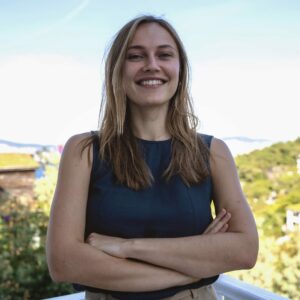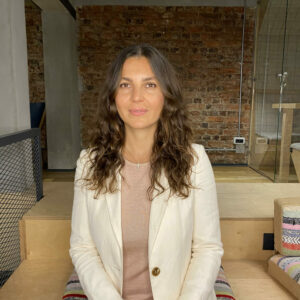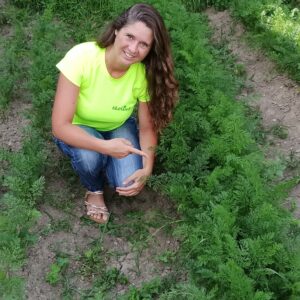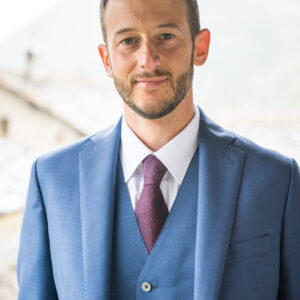
Stepping into Innovation: Materially Insights from SoTecIn Factory Phase 1
Find out more about Materially, their Phase 1 experience and mission for circular industry transformation, as one of SoTecIn Factory Open Call 1 Phase 2 winners receiving up to EUR 85K funding for the pre-market tech demonstration of their social innovation solution.
Can you briefly explain your solution and its key mission? What is your current business model?
CFORCE-F is a digital tool designed to facilitate the access and application of sustainable materials in the footwear industry. The solution integrates with footwear design software, offering environmental data from a database of carefully selected materials, specifically scouted to comply with EU Eco-design directives. The tool will provide an approximate preview of the final product’s environmental impact, offering a practical solution for implementing circular manufacturing.
From a business model perspective, the tool will be offered as a yearly subscription to footwear designers, manufacturing companies, and educational institutions.
What long-term, systemic change do you aim to achieve in the industry? How has the SoTecIn Factory program, particularly Metabolic’s workshop on building systemic impact strategy, influenced your approach to triggering that change?
CIFORCE-F aims to reduce the environmental impact of the footwear industry by promoting the use of sustainable materials, eco-design practices, and end-of-life strategies in the sector. The long-term objective is to establish a circular system in Europe, where the overall consumption of natural resources is minimized, and production becomes a source of secondary raw materials.
The SoTecin Factory program has been instrumental in introducing the concept of systemic change—an approach I had previously only understood intuitively. Applying it with a focus on social impact and breaking down its methodological components made a significant difference in defining how to implement our venture.
Addressing the cultural aspects of both footwear production and consumption is crucial to achieving the changes we seek. This realization emerged while developing a systemic impact strategy. The most significant results in this area are yet to be realized, and they will involve engaging with stakeholder groups to transform their perceptions of materials, no longer seeing them simply as virgin resources or acceptable for manufacturing use, nor viewing shoes as destined for the landfill.
In Phase 1, you joined workshops and mentoring to boost your capacity for systemic impact in the EU’s circular industry. What valuable skills, tools, or connections did you gain, and which parts were most helpful?
Some of the ideas and approaches specific to systemic impact change acquired in Phase 1 are particularly meaningful for the mid- and long-term. A few examples include: partnering with competitors, utilizing any developed intellectual property with the explicit goal of expanding or deepening the system change we are pursuing, and involving stakeholders’ organizations and industry associations.
These perspectives are currently yielding fresh and effective results in transforming the way we view our business, such as considering collaborations with like-minded ventures that we previously saw as competitors.
In your view, what support do social impact ventures with circular economy strategies need to be impactful and resilient? Has SoTecIn Factory Phase 1 provided any insights to improve your business sustainability?
A key factor for anyone aiming to create a deep and long-lasting impact is financial sustainability. While this is not new information, many organizations are still unaware of the vast world of funding opportunities and strategies that have evolved around impact investment over the past few decades. This was true for us, as our previous activities as a social enterprise focused on material sustainability and innovation were primarily financed through traditional means, such as loans.
Equally important to a social impact approach is collaboration and coordination with multiple stakeholder levels, from end users to governmental institutions. While this is not a new insight, SoTecin Factory Phase 1 has helped us sharpen our focus on the various roles that each stakeholder can play—whether as customers, knowledge providers, or indirect co-shapers of our venture’s mission.
In Phase 1 of SoTecIn Factory, you co-developed your solution with a Market Validator, an industry actor and potential customer. How did this refine your solution and enhance your understanding of sustainable industry challenges? How will it prepare you for building and testing your Phase 2 demonstrator?
Meeting the challenge owner was a valuable opportunity to align our solution with the actual needs of end users in implementing a circular transition. This exercise gave us a deeper understanding of the pains and gains faced by industry players and enhanced our ability to address their real needs, rather than designing a service based solely on what we believe would create the desired impact.
Additionally, thanks to our engagement with a Market Validator in Phase 1, we initiated contact with several potential end users and industry players. These interactions will be crucial in shaping the architecture, outputs, and user experience (UX) of the digital tool we are developing.
What inspired you to adopt social initiatives in your business? Was there a specific moment or experience that sparked this decision?
When the venture took its independent steps in 2020 and rebranded as Materially, it also established itself as a Social Enterprise with a mission to “raise awareness among public administrations and private companies about the 2030 Agenda for Sustainable Development; spread attention to environmental sustainability and promote a shift towards a Circular Economy and eco-design”.
This rebranding was the culmination of nearly two decades of work on innovative and sustainable materials, which laid the foundation for the venture’s knowledge and understanding of the need for a circular shift in manufacturing.
How do you stay focused on your mission for a sustainable industry, and how has the SoTecIn Factory program supported you? Additionally, what were your key takeaways from the Phase 1 Steward Ownership workshop, and why is it an important governance approach for mission-driven businesses, even if you haven’t adopted it?
We maintain focus through our day-to-day work by searching for existing sustainable material solutions and applying them to real-life problems. The SoTecin Factory program has broadened our vision, introducing us to new approaches to make things happen. Collaborative methods and systemic change are among the most inspiring takeaways from Phase 1.
As the owner of the venture, looking toward the future of the organization, Steward Ownership was a particularly eye-opening discovery. A mission-driven business aligns with Materially goals, and stewardship appears to be a governance model that formalizes what I have already been striving for informally—a shared responsibility and an opportunity for self-expression for everyone working within the organization.
Balancing your mission with personal well-being can be challenging for social entrepreneurs. What’s your secret ingredient to achieving this balance? Are there any tips, tricks, or tools from the SoTecIn Factory Program—whether from webinars, mentorship, or informal chats—that you’d share with other innovators?
Only one: Embrace problems and difficulties as opportunities to rethink and improve your venture.
For the end, what are your expectations of Phase 2 of the SoTecIn Factory programme? What are your general goals for the next 6-12 months?
From Phase 2, we expect to create and test our digital tool, understanding that some features and solutions may evolve throughout the process from what we have envisioned so far. Our goal is to find a reliable partner to develop the tool, engage with industry players, understand their needs, and create something that is both commercially viable and transformative in how shoes are designed and manufactured.
The SoTecin Programme has acted as a catalyst for many of the smaller projects we’ve been working on over the past couple of years. These efforts have highlighted the strong, cross-industry need to effectively utilize information about sustainable materials, which are thankfully becoming more prevalent globally. Over the next 12 months, we aim to address various specific needs under this larger umbrella, supporting the diverse ways companies are trying to bridge the gap between information and practical application.






































